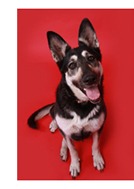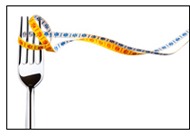Choosing the Right Keywords
0
In the first part of our series on proper keywording, titled “Keywords and sales: the importance of choosing them properly,” we discussed keyword spamming, careful selection of tags, and the right way to choose keywords from the buyer’s perspective.
Today, in part two, we’ll cover:
- how to create keyword phrases using quotation marks
- specifics of keywording for concept images
- using visualization to refine your keyword list
Formatting Keyword Phrases
Use quotation marks when entering two-word keyword phrases. Returning to the example from part one, let’s consider a photo of a German Shepherd.  Include keywords such as dog, fang, East European Shepherd, and German Shepherd.
Include keywords such as dog, fang, East European Shepherd, and German Shepherd.
During keywording, you should add quotes around the phrase “German Shepherd,” in addition to separate keywords “German” and “Shepherd.” This helps your image appear for the buyer’s exact phrase searches on stock sites.
For example, there is a big difference between the country “Mexico” and the state “New Mexico.”
A buyer who needs the former, not the latter, may quickly get frustrated if search results show images related to the U.S. state rather than the country. That’s why we insist on using quotation marks to designate keyword phrases.
How to Keyword Concept Images?
Think concrete first, then abstract. A brick wall can symbolize both strength and an obstacle. But what is it primarily? First and foremost, it’s simply a brick wall. Start with nouns and verbs, then move on to adjectives.
 Keywording concepts can be frustrating because of subjectivity. The popular conceptual image of a fork wrapped with a measuring tape like spaghetti typically suggests dieting.
Keywording concepts can be frustrating because of subjectivity. The popular conceptual image of a fork wrapped with a measuring tape like spaghetti typically suggests dieting.
Fork and “measuring tape” (note the quotes) are the obvious terms. Diet, obesity, and health are the abstract concepts that best describe this image. Makes sense?
Visualization
Keywords are critically important. When submitting an image, pause for a second before the final click and think through your keyword choices. Try to visualize your chosen keywords as images. 
Do your visualizations match the actual image you’re uploading and tagging? If yes, go ahead!
If not, re-check the keyword list and pick terms that fit more closely. This will help increase your overall earning potential on microstock and reduce frustration when a portfolio image underperforms.
If an image in your stock portfolio still isn’t earning what you believe it should, please revisit the initial keyword list and make the necessary changes.
New keywords might be exactly what your image needed to become a new bestseller on a stock site.
Authorship: Shutterbuzz
Original link: http://buzz.shutterstock.com/keywording/good-keywords-sell-the-importance-of-keywording-properly-part-2



